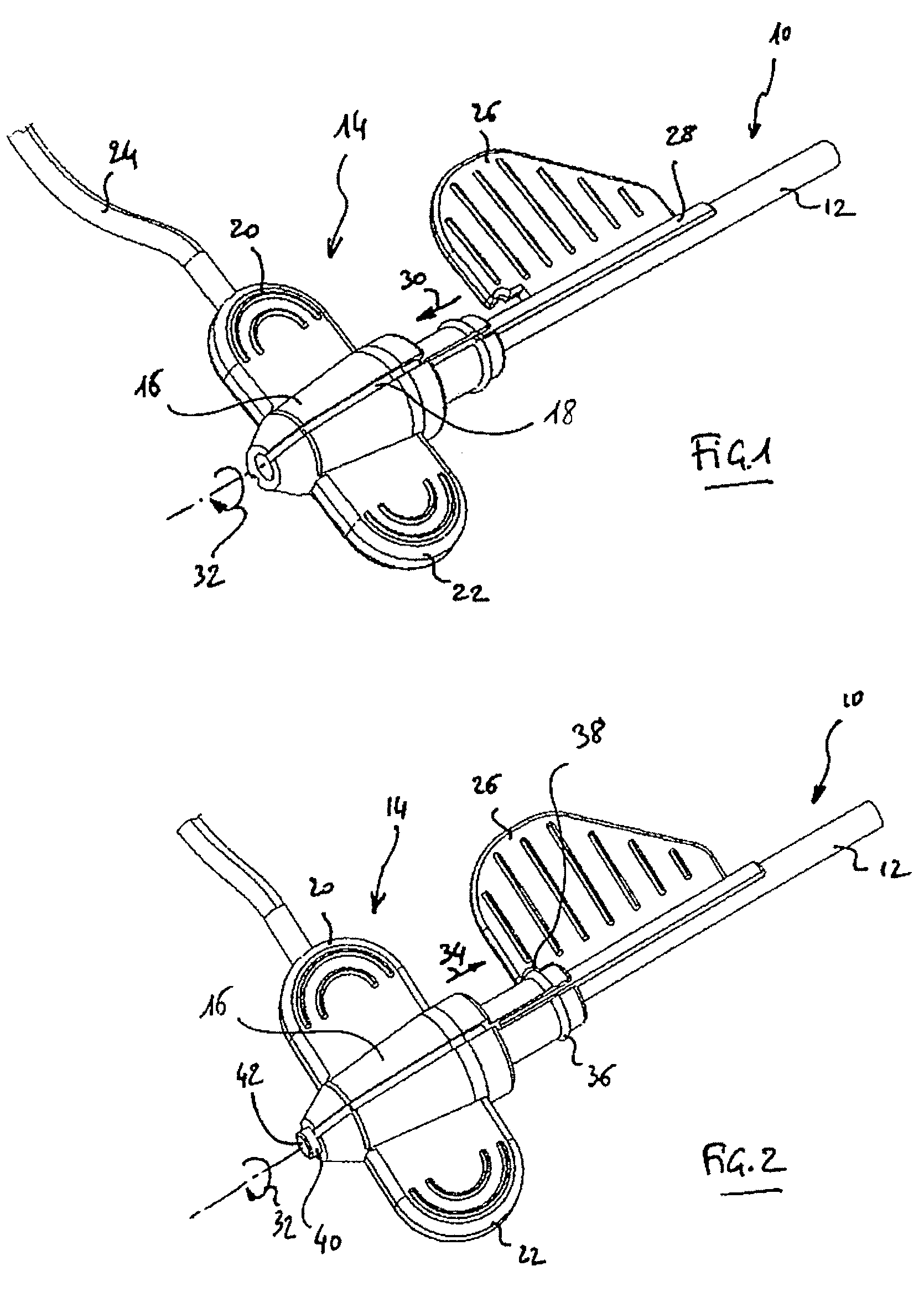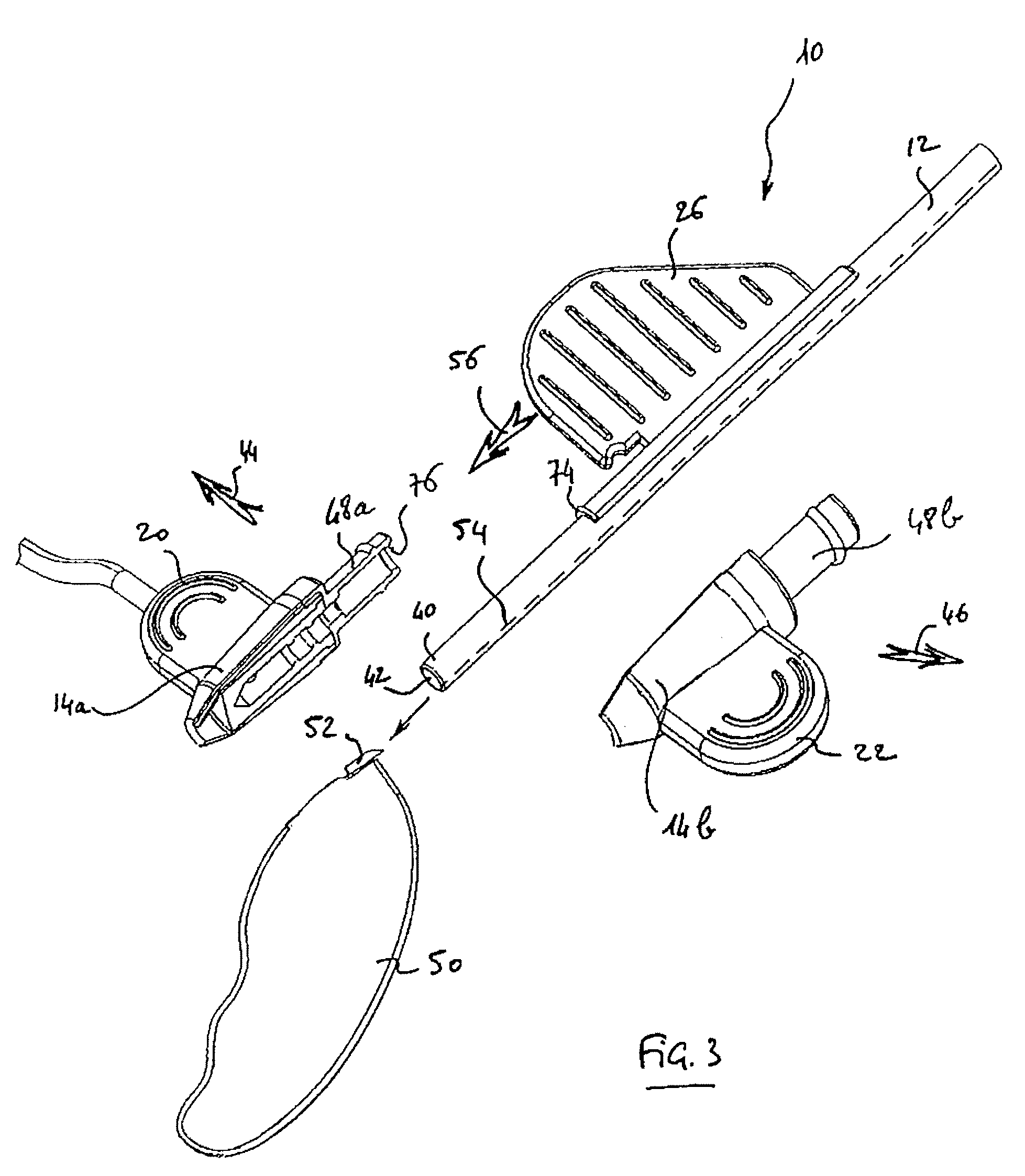The
insertion of the latter type of leads, carried out through endocavitary approaches, is a particularly tricky intervention, taking into account the difficult access to the
coronary sinus entrance via the
right atrium, and also the required accuracy for the pacing sites once the lead is guided to its desired location and immobilized within the coronary network.
The extraction procedure is tricky because the lead must not be displaced, or its position or orientation altered as a result of the extraction.
One other difficulty of this extraction step is due to the presence of the
electrical connector, at the proximal end of the lead: the
diameter of this connector being greater than that of the internal lumen of the guide-catheter, it prevents the guide-catheter from being withdrawn by being simply slid backwardly along the lead.
It has already been proposed in the prior art, in order to avoid resorting to a sharp
cutting tool, to use a non-reinforced sheath that is simply strippable; however,
cutting of such a sheath along its whole length leads to a
weakness and a lower rigidity of the guide-catheter, with a risk of folding and lower transmission of efforts (forces) during its setting up preparatory to an intervention event.
This method however leads to an increasing number of steps required for setting up and assembling the different elements, and also renders the intervention procedure more complicated.
One additional difficulty of this type of intervention comes from the presence, at the proximal end of the guide-catheter, of a
hemostatic valve allowing to obdurate at will the internal lumen emerging from the proximal end, opened, of the guide-catheter.
This
hemostatic valve must meet several requirements, adding to the difficulties explained above.
However, the procedure is rendered more complicated due to the need for resorting to an additional accessory known as TVI or
dilator, in order to open the filling element of the valve and protect the lead during the passing through thereof.
All the various devices that have been proposed so far, however, suffer from several difficulties, particularly among them are the following:there is always an existing
significant risk, during the intervention, of a lead displacement at the moment when the valve is removed and the guide-catheter extracted, especially with those leads that are provided with an
electrical connector having a large
diameter, as all the accessories that are part of the introducing toolkit have to be removed over this connector;the valves that are driven by a
screw system require that the surgeon has a very accurate dexterity in order to prevent from damaging the lead by squeezing it too much and, reversely, from creating a lack of tightness during the intervention, due to an insufficient squeezing;in the case of a divisible
coupling bell,
cutting thereof by means of a standard slitter is difficult, due to the brutal variation of the
cutting force during the transition between the material of the bell and the reinforced sheath, with a risk of displacing the lead if the forces exerted by the surgeon are not well accurately balanced;due to their simplicity, the frangible systems allow an easy removal of the valve, but have the drawback of not comprising any practical mechanism for driving the valve, thus oblige resorting to a
dilator for introducing the lead in the valve; this accessory is “floating around” along the
lead conductor during the intervention, and anyhow will have to be removed by means of peeling at the end of the intervention;the frangible valves that are made as a single block with the guide-catheter, do not allow the surgeon to turn the lateral way around the guide-catheter;all the solutions proposed up to now require a certain number of accessories or separate elements, which renders the surgeon's operation more complicated, during the critical step of the guide-catheter extraction, when the surgeon has to be focused on maintaining the position of the lead;as the lead has to pass through all these accessories, notably the
dilator, the lead electrodes may become polluted, especially by the
lubricant usually utilized with the valve.
 Login to View More
Login to View More  Login to View More
Login to View More 


